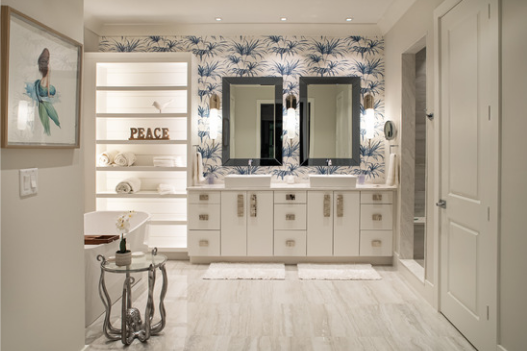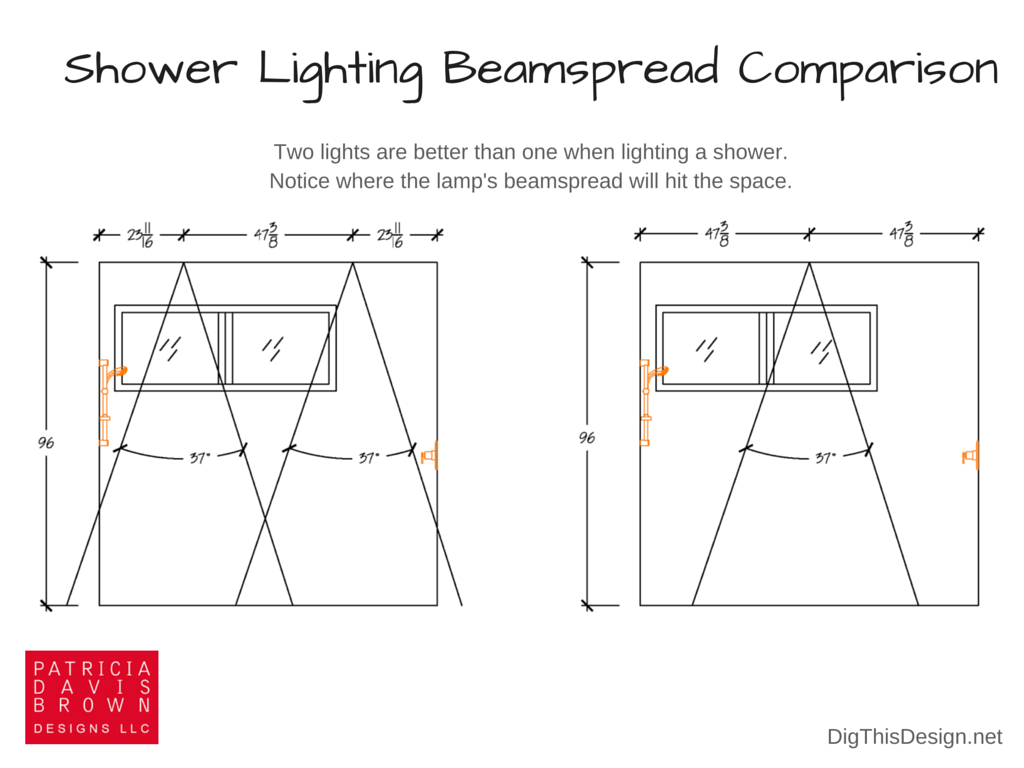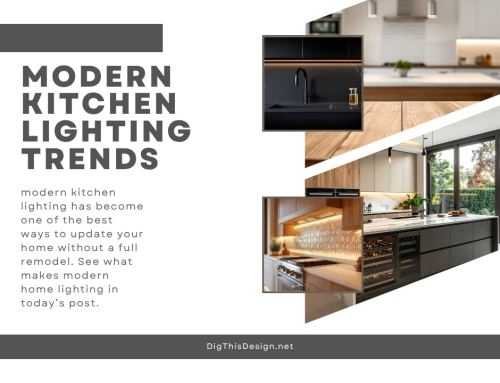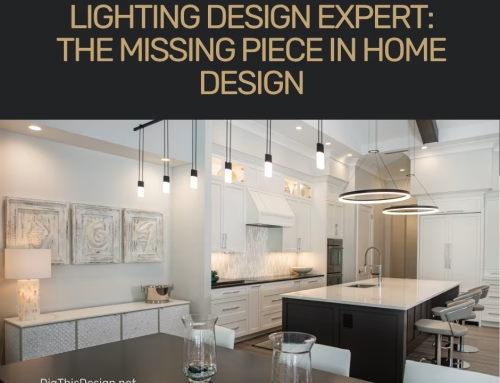The master bathroom is a place where you perform many tasks from relaxing to personal grooming and it is important to have ample light to perform each and every task. A layered lighting plan will give complete control to the person who is using the bathroom whereas just having a bathroom with only general lighting will be insufficient.

There are three types of lighting zones you will need to incorporate:
General Lighting
General lighting is a lighting source that allows us to navigate the bathroom safely. This lighting should not be overpowering and should sufficiently light the pathways. I would recommend using recessed lighting with a flood lamp. A flood lamp will not only throw lighting downward, but it will also filter light up on the vertical, surfaces washing the walls and cabinetry with soft lighting.
If you were to use a lamp with a tight beam spread, like an MR16 beam, you would create shadowed vertical surfaces and that would not be a good effect. You can see the general light recessed cans are not giving enough light to the walls and cabinetry, creating uneven shadows across the walls and cabinetry and distorting their finishes.
However, even the illumination and the finishes stay true. This is the effect you would like to achieve with the general lighting. Depending on the height of the ceiling the candlepower of your lamp would need to increase appropriately, but remember that the general is not as high of a candlepower as your task areas, you are creating soft even illumination.
Task lighting
You need task lighting wherever you are performing a task such as showering, grooming, bathing, and reading like many do in the toilet room. It is imperative that you have plenty of lights to do these tasks.
Shower lighting – This should be balanced and more powerful than the general lighting. Never use just one light fixture in a shower, it will create severe shadows and make it difficult to see. Using two or more fixtures, depending on the size of the shower, will eliminate the shadow effect as seen in the graphic below.

It is necessary to always use fixtures dedicated for wet locations in showers.
Bath Tub Lighting – will need to have task and ambient lighting because it is also an area for relaxation. The requirements for lighting over a bathtub for the task would be the same as the shower, you would want to use two or more for even lighting. Relaxation would need to be lit from the walls, possibly with decorative sconces, using ambient lighting to create mood lighting. All of the lighting for the tub and the general would need to be dimmable so it could be adjusted to the user’s comfort.
Vanity lighting – must be lit from above to shine down on the countertop surface and on either side of the sink at eye level to shine across the face, in order to achieve even lighting. If you just light with one recessed can above the vanity sink you will create severe shadowing on the face, making it difficult to apply makeup or shave. It will be better to place recessed can lighting an equal distance off the center of the sink so the cone of light will hit each side of the face equally. Adding cross-lighting with sconce will fill any shadowing whatsoever giving ample light to perform your task. For more details on vanity counter lighting read my post, “How To Light A Vanity Correctly”.
Toilet room lighting – This is a room where two tasks happen, one goes without mentioning and the other is reading. Reading needs to have a good light output so you will want to have a good condensed beamspread (not a flood lamp) positioned at least 36 inches away from the wall that the toilet backs up to so that the beamspread will hit the reading material. Depending on the design of your toilet, the distance off the wall will need to be adjusted. Most toilets protrude 30 inches into the room while a wall hung only protrudes 21 inches.
Ambient Lighting
The master bathroom has become a place where people go to relax. It has also become a beautiful room and one of the most important rooms for resale. Ambient lighting is an important feature in a master bathroom for creating mood lighting. I personally relax in my soaking tub every night and I probably would not if I only had one switch that turned on bright lighting, it would not be relaxing. Because I have several layers to my bathroom lighting I can create the atmosphere I want and when I am soaking I only want dim ambient lighting on. Most ambient lighting is created with decorative fixtures such as sconces or chandeliers, which help to create the character of the space as well.
What A Layered Lighting Plan Should Looks Like
As you can see with a layered lighting plan, every area of the bathroom is considered for the task being performed. The lighting symbols explain what each lighting symbol represents. The most important information on the lighting legend is the lamp specification and it should be specified so you get the proper beamspreads and candlepower you want for each layer. If you are reviewing your lighting plan and there is no lamp specified, then you do not actually have a formulated true lighting plan.

I understand how stressful an interior design project can be. You may need someone to guide you, help to explain all those choices, and point you in the right direction. I’m available for consultation via Skype for your interior design project, no matter the size. Our virtual session will include a document detailing everything discussed. Feel free to contact me prior to setting up a consultation.





